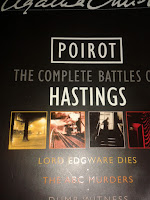Undeniably the best Byomkesh after a very long time. Cool and composed, this Byomkesh is more intellectual than active. His activity is centred around his investigations rather than intuitions and thus a logical course follows along the entire movie making the thriller an exciting entertainment.
Based on Saradindu's Bahni-Patanga, the original story has been relocated from Patna to Benaras. The place, the naming of the story and the final sequence seems to be a tribute to the master director who had made both renowned Bengali fictional detectives appear in cinemas.
Though there are several changes in the story which doesn't make the basic plot different from the original but two instances could have been kept unchanged. The first disappointment is at the climax whose prolonged run has taken away much of the suspense. The second mistake however could have been easily avoided. While solving the plot it is revealed that one person, except those who took part in the actual crime, knew the truth all along. The question therefore remains as to the cause of the silence but it remains unjustified throughout.
The acting of everybody in the film is superb devoid of any loquaciousness which really makes the whodunit a classic hopefully. Special mention must be made of Ritwick who blends the character of Lalmohanbabu as well as Topshe with the characteristics of Ajit thus giving rise to novel yet pleasurable relief sequences.
Based on Saradindu's Bahni-Patanga, the original story has been relocated from Patna to Benaras. The place, the naming of the story and the final sequence seems to be a tribute to the master director who had made both renowned Bengali fictional detectives appear in cinemas.
Though there are several changes in the story which doesn't make the basic plot different from the original but two instances could have been kept unchanged. The first disappointment is at the climax whose prolonged run has taken away much of the suspense. The second mistake however could have been easily avoided. While solving the plot it is revealed that one person, except those who took part in the actual crime, knew the truth all along. The question therefore remains as to the cause of the silence but it remains unjustified throughout.
The acting of everybody in the film is superb devoid of any loquaciousness which really makes the whodunit a classic hopefully. Special mention must be made of Ritwick who blends the character of Lalmohanbabu as well as Topshe with the characteristics of Ajit thus giving rise to novel yet pleasurable relief sequences.























